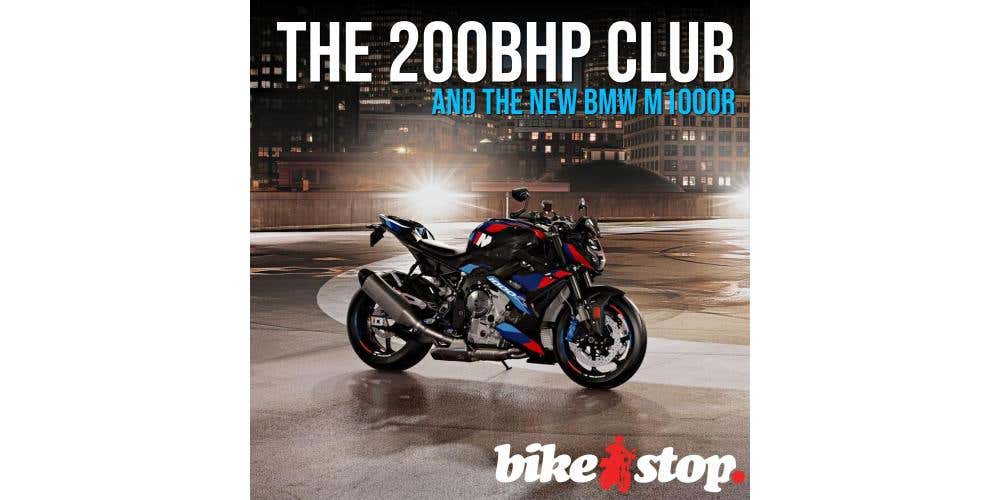When I first started riding, it seemed like 100bhp was a lot for a motorbike. I have distinct memories of almost soiling myself the first time I fully opened the throttle whilst in 2nd gear on my GSX-R600 K3. After a couple of years, I upgraded to a GSX-R750 K7, with a whopping 135bhp. I have fond memories of my time with the 750. Looking back now, it seemed like it had just the right amount of power. It was more than enough for the road and effortless on track, providing the buzzy thrills of a 600 without the oh-my-god-that-corner-is-approaching-way-too-quickly terror of a 1000.
Nevertheless, after a few years with the 750, the lust for power took hold, and I ended up with my first 1,000cc sports bike, an RR9 Fireblade. With around 165bhp, it felt like a huge step up over the 750. It wasn't really because of the extra power itself but more due to its ability to deploy it. At points on my morning commute where I'd be shuffling around the gears on the 750 to have a bit of fun, I could leave the Fireblade in top gear and plough on. Inevitably, it wasn't long before I was dropping cogs on the Fireblade to give it a bit more shove. It's incredible how quickly we get used to extra power. However, I've often wondered if there's such a thing as too much power.
I don't think it's a simple answer. In theory, a new rider could pass their DAS on a Friday, walk into a bike dealer on Saturday and hand over a fat stack of cash in return for a bike with over 200bhp. However, I suspect a new rider doing that today would be in a much better, safer position than if they'd walked into a Suzuki dealer in 1998 and bought a 135bhp TL1000R for their first bike. The advance and proliferation of technology in tyres, engineering and electronics have softened the brutal punch of excess power.
I've ridden a few bikes with power outputs in excess of 200bhp, and, on the road at least, they're pussycats. Sure, they're potent, but so long as the electronics are doing their thing, they'll keep it all manageable. Take a Streetfighter V4 out on a cold and slippery morning, and although the traction control light will be illuminating the dash like a Pink Floyd concert, you're unlikely to be high-sided into a hedge. Of course, you can't overcome physics completely, but so long as the rider takes a sensible approach to riding, there's no reason why they shouldn't be able to enjoy a new bike whether it has 50bhp or 200bhp.
Once you've accepted that electronics make these 200bhp monsters entirely accessible, you can then enjoy the potency. If you've never experienced a bike with more than 200bhp, I'm happy to confirm that it's quite the experience. There's a brutal physicality to the experience. While your mind is desperately trying to keep up with the flow of information, your muscles are working overtime to hang on. On a naked bike, your neck muscles get a serious workout, from trying to keep your head forward while your thighs squeeze the tank with enough pressure to crack a brazil nut. Forget the gym.


Anyway, with the preamble out of the way, let's take a quick look at the latest member of the 200bhp club; the BMW M1000R.
When the S1000R was released in 2014, 162bhp seemed like a very healthy amount for a naked bike. However, since then, things have moved towards the sillier end of the power spectrum. Ducati’s Streetfighter V4 pumps out 208bhp, for example. Nevertheless, BMW is now back on top with the M version of its competent all-rounder. Whilst BMW could have possibly chosen to make the M1000R an exercise in pretty stickers and carbon tat, they have instead thrown the kitchen sink at it. When the kitchen sink landed, a more powerful version of its inline four-cylinder fell out, and conveniently landed neatly into the bike’s frame. Boasting a whopping 44bhp over the S1000R, and without losing any noticeable torque, the M provides a huge step up in power over the bike it’s based on.
The main difference between the engine used in the R and the one used in the RR has been the ShiftCam system. The ShiftCam variable valve timing has only been used on the RR, giving two different cam profiles: one for smooth road riding under 9,000rpm, and one for kamikaze power over it. As well as an increased rev limit from 12,000 to 14,600rpm, there’s also an extra couple of teeth in the rear sprocket to improve tractability. If that’s not enough hooligan potential, you’ll be pleased to know that 4th, 5th and 6th gear have all been shortened, too. It all sounds very promising.
Needless to say, with the extra power and shorter gearing, the electronics are going to be busy. Thankfully, a complete electronics package drawing information from a six-axis IMU comes as standard. The package is somewhat comprehensive. As well as lean-sensitive traction control, there are five riding modes: Rain, Road, Dynamic, Race and Race Pro. On top of these features – which, let’s face it, are standard on most bikes now, there’s also launch control, hill hold and a pitlane limiter.
The final piece of the electronics puzzle is what BMW call Brake Slide Assist. If you’re a fan of backing it into a corner whilst looking cool, but also a fan of not being in hospital, you’re in luck. Brake Slide Assist will maintain the slide for you by controlling the rear wheel slip via back brake pressure. Now you can look like your favourite MotoGP star whilst traversing Milton Keynes.
As Pirelli taught us during the 1990s: Power is nothing without control. To that end, the M brakes seen on the M1000RR have been bolted to the R. Thus, the M brakes feature four-piston radial callipers squeeze 320mm discs. Finally, at the rear, there’s a 220mm steel disc and single-piston calliper.
The 45mm front forks have a complete range of electronic adjustability and are now finished in black. You really should’ve gone with gold, though, BMW. Maybe next time. Furthermore, an adjustable steering damper should weed out the less desirable moments when getting on the power. There's even the addition of front winglets to help keep the front-end pinned to the ground - not to mention they also look cool, too.
Rounding out the package is a 6.5-inch full-colour dash, which looks unsurprisingly similar to the M1000RR. Additionally, If you’re going to commute on your M1000RR, you’ll be happy with cruise control, heated grips, keyless ignition and a USB charging port.
All in all, it sounds like an incredible package. If you've considered an S1000R in the past but may have felt a little power envy because of the competition, you may, at last, have the perfect bike.
BMW says the M1000RR will be available from next April, though you may want to start badgering your dealer now. With a starting price of £19,480, I fully expect demand to be on the high side. Consequently, I may even call my local Motorrad dealer today.










